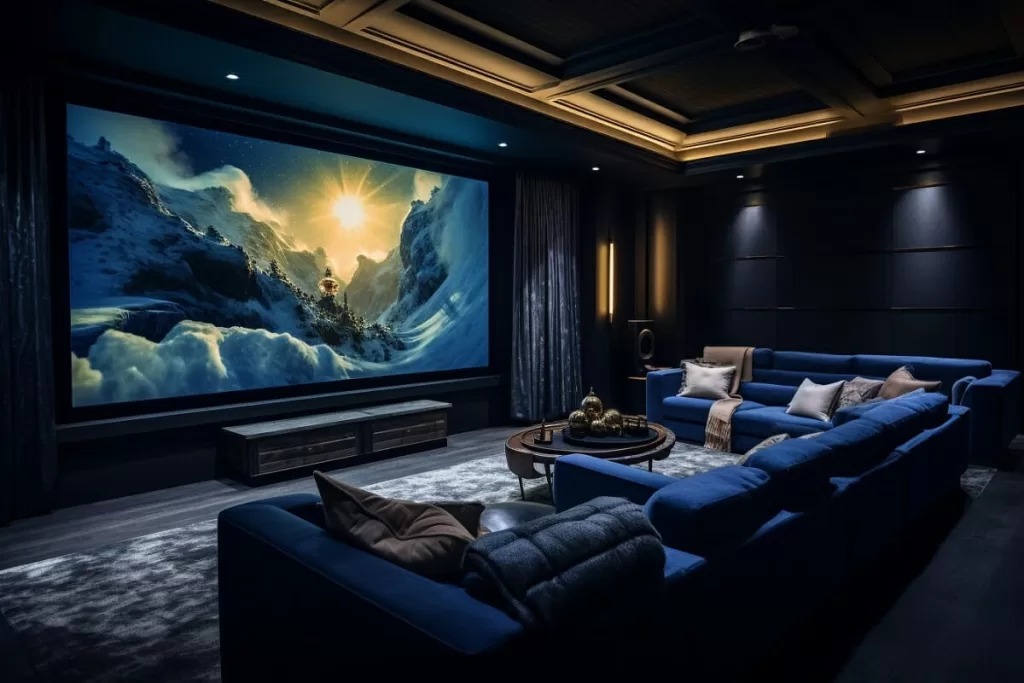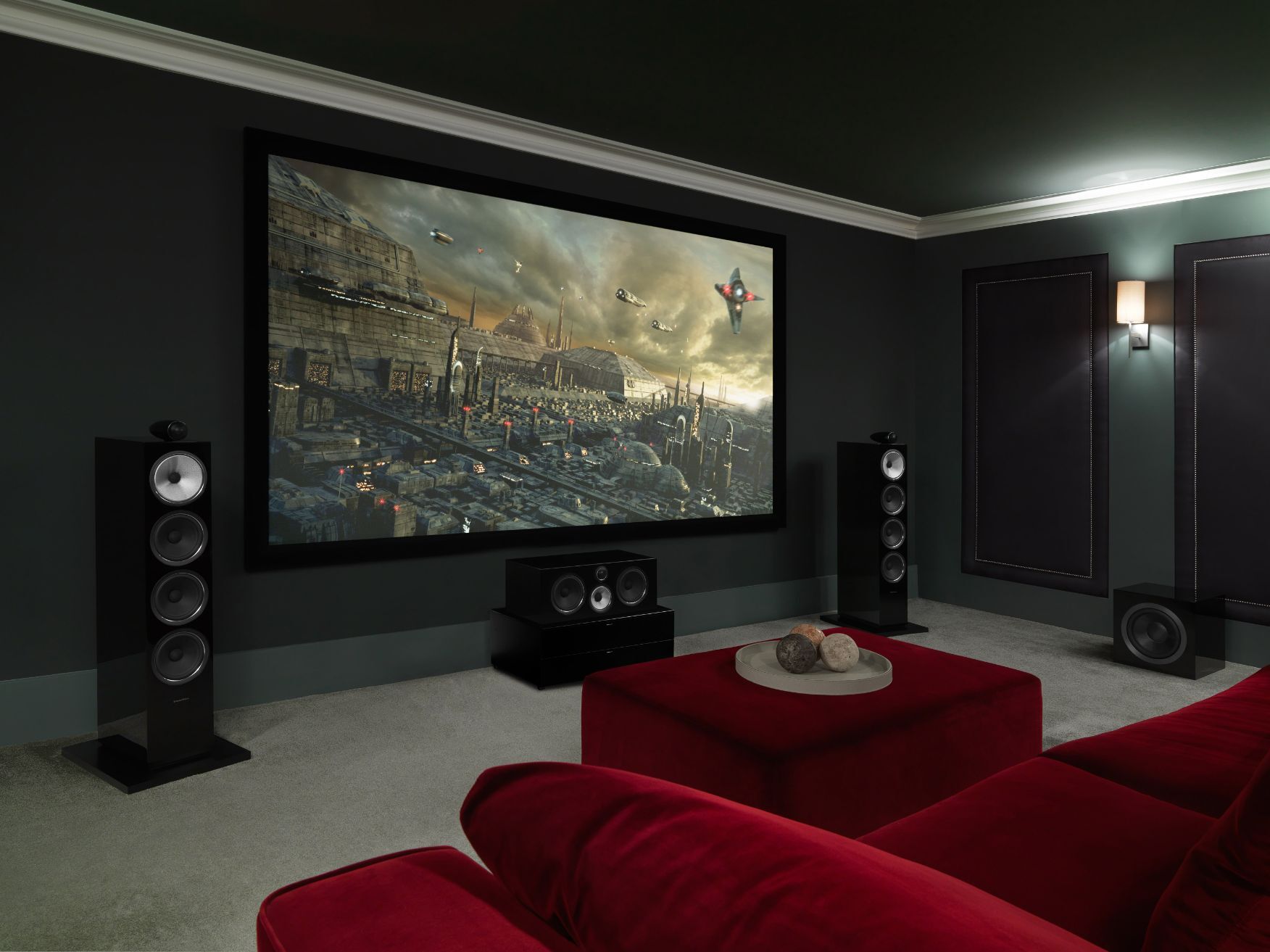Home Theater Tampa: Bringing Theater-like Experiences Into Your Home
Home Theater Tampa: Bringing Theater-like Experiences Into Your Home
Blog Article
Home Theater 101: Everything You Required to Know for a Motion Picture Experience at Home
Producing a home movie theater that measures up to the cinematic experience of a commercial theatre includes cautious consideration of several elements, including screen option, stereo, and space layout. Each component plays a pivotal role in achieving the desired atmosphere and performance. Whether you are considering the suitable screen size or the ins and outs of border audio, comprehending these principles is crucial. As we discover these critical components, it becomes evident that the selections made can dramatically influence your general viewing experience, leaving one to ponder how these choices will certainly form your personal cinema.
Choosing the Right Screen
When establishing a home cinema, choosing the right display can make or break the watching experience - home theater design tampa. The display acts as the centerpiece of your arrangement, affecting picture high quality, viewing angles, and total aesthetic. Secret elements to take into consideration include display type, size, and resolution
First, establish the appropriate display size based on your space measurements and seating distance. A general standard is to sit roughly 1.5 to 2.5 times the angled screen size for ideal watching. Next, select in between various screen kinds, such as fixed-frame, mechanized, or retractable screens, each offering distinctive benefits. Fixed-frame screens commonly provide the finest photo high quality, while mechanized options permit adaptability precede usage.
Resolution is an additional essential aspect. For a really immersive experience, consider a screen designed for 4K and even 8K material, making certain intensity and clarity. Additionally, consider the screen's gain, which affects illumination and comparison; a greater gain can boost brightness in well-lit rooms, while a lower gain may be better for darker atmospheres.
Choosing Audio Equipment
Audio tools is a crucial component of any home theater system, considerably enhancing the overall watching experience. The option of audio equipment can figure out the depth, clarity, and immersion of audio, critical for developing a motion picture environment.
When selecting audio equipment, consider a border audio system, which usually includes a receiver, multiple audio speakers, and a subwoofer. A 5.1 or 7.1 network system is suggested, where the very first number represents the audio speakers and the second the subwoofer, offering an immersive soundscape. The receiver is the heart of the system, managing sound and video clip signals, and should sustain contemporary styles like Dolby Atmos for an enhanced spatial experience.
Quality audio speakers are crucial; appearance for designs that offer a well balanced noise profile with good bass feedback. Floor-standing speakers can generate richer noise, while bookshelf choices conserve room. Furthermore, consider cordless options for convenience of setup, although wired systems frequently supply remarkable performance.

Ideal Seating Arrangements
Developing an excellent home cinema experience hinges considerably on optimal seating setups. The setup of seats plays an important function in both comfort and watching high quality, directly influencing the general cinematic experience.
First, take into consideration the display size and watching distance. An usual standard is to position seats at a range around tampa home theater installation 1.5 to 2.5 times the diagonal size of the display. This ensures an immersive experience without straining the eyes.
Next, altitude is crucial. The back rows should be higher than the front to stay clear of blockages if your seats is in a tiered layout. For flat seating, make certain that the front row is not too near the display, and that every person has a clear line of view.
Moreover, consider the plan in terms of social dynamics. Team seats can improve the public experience, while individual seats may be favored for individual watching.

Lastly, focus on convenience with ergonomic seating that sustains prolonged viewing durations. Integrating reclining chairs or supported seats can substantially improve the experience, making the home movie theater a recommended location for both amusement and leisure.
Lighting and Atmosphere
Reliable lighting and ambiance are necessary parts of a well-designed home movie theater, as they substantially affect the seeing experience. The ideal lights can boost the cinematic feel, while poor options can diminish it. For ideal outcomes, take into consideration a split lights strategy that consists of ambient, job, and accent lighting.
Ambient lights provides general lighting, ensuring that the space is not completely dark, which can strain the eyes. Dimmer switches are very advised, enabling changes based upon the web content being watched. Job illumination, such as wall sconces or floor lamps, offers useful illumination for activities like analysis or browsing the room without interrupting the total atmosphere.
Accent lighting can be used to highlight architectural attributes or develop prime focus, including deepness and rate of interest to the space. LED strip lights behind displays or along shelves can provide a refined glow that boosts the visual experience without overwhelming the customer.

Wiring and Installation Tips
A tactical electrical wiring setup is crucial for achieving optimum performance in your home cinema system. Appropriate wiring not just makes sure top notch audio and video clip signals however additionally improves the total visual of your area. Begin by mapping out your format, determining where each component will be placed, including your screen, speakers, and receiver.
When selecting cords, prioritize high-quality, suitably evaluated circuitry to minimize signal loss. HDMI cords ought to be made use of for video links, while speaker cable should match the requirements of your speakers and amplifier. Go with in-wall rated cords to comply with security standards and preserve a tidy look.

Final Thought
In summary, creating an extraordinary home movie theater experience calls for mindful factor to consider of numerous components, consisting of display option, audio tools, seating setups, lights, and circuitry. By focusing on these aspects, a motion picture environment can be effectively duplicated, enabling for immersive seeing experiences that match conventional theater settings.
Creating a home cinema that measures up to the motion picture experience of an industrial theatre involves careful factor to consider of numerous elements, consisting of screen choice, audio systems, and space format.When setting up a home movie theater, choosing the best display can make or damage the seeing experience. Next, select between different display kinds, such as fixed-frame, mechanized, or retractable displays, each offering unique advantages. For a truly immersive experience, take into consideration a display developed for 4K or even 8K web content, making sure sharpness and clarity.In recap, creating a remarkable home theater experience needs careful factor to consider of different elements, consisting of screen option, audio devices, seating setups, illumination, and electrical wiring.
Report this page